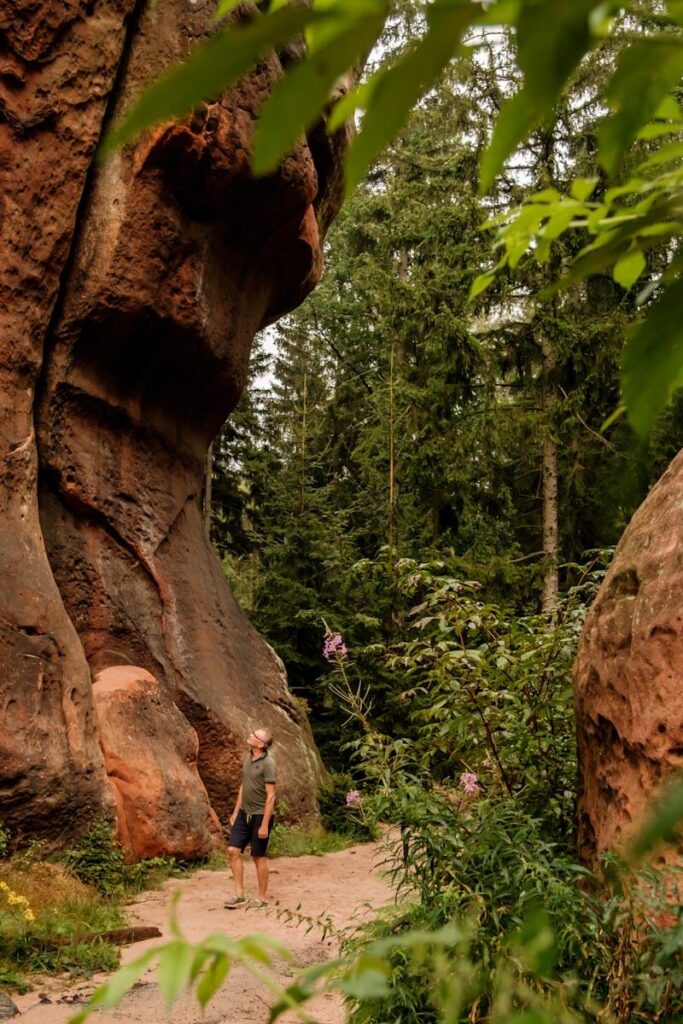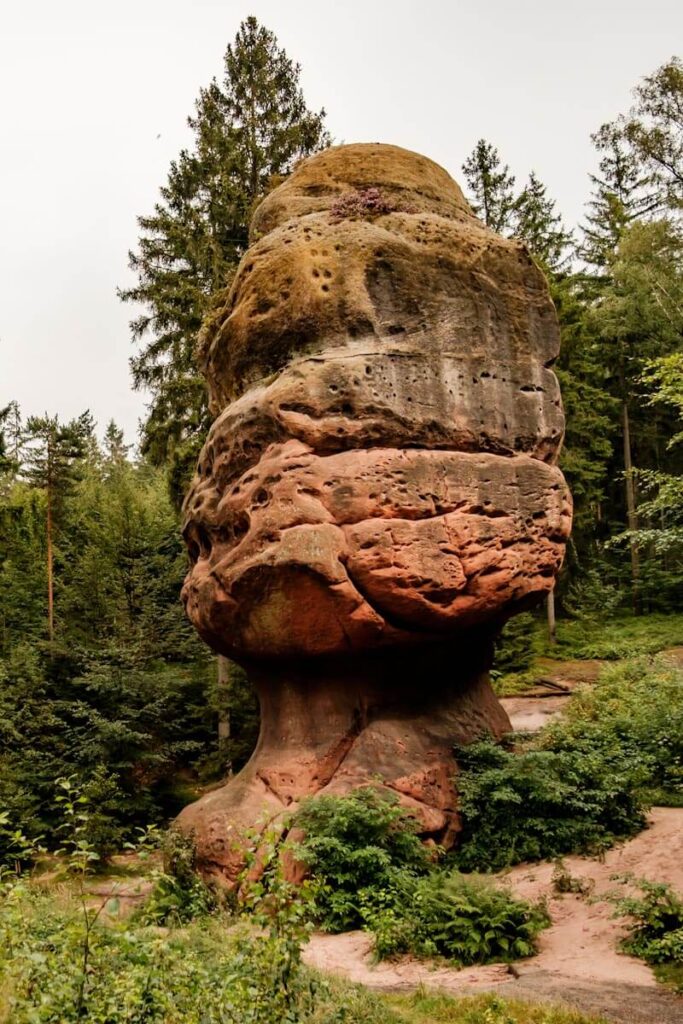In the German region of Saxony, near the border with the Czech Republic, lies the village of Oybin. Oybin is known for its impressive rock formations and the ruins of the Oybin Castle and Monastery. I visit this small town on my way from the Czech Republic to Saxon Switzerland. It’s a great stopover!
Why is Oybin a special German town?
Oybin is special due to its picturesque location in the Zittauer Gebirge and the combination of nature and history, linked to Emperor Charles IV. The village is surrounded by vast forests, with impressive sandstone formations hidden between the trees. In my opinion, there are several places in Oybin that you should definitely see; you’ll read more about them below.
Castle and monastery of Oybin
The Oybin Castle and Monastery sit atop a distinctive sandstone rock approximately 514 meters high. The history of this place dates back to the 13th and 14th centuries. Originally, the castle was built as a defensive structure against enemy attacks in the region. In the 14th century, Emperor Charles IV took control of the castle. He decided to build a monastery next to the castle for the Celestine monks, an order closely connected to the Cistercians. The monastery had an impressive Gothic church with tall windows and pointed arches, parts of which are still visible in the current ruins.
The location on the steep rock made Oybin a strategically important place, but with the advent of firearms, the fortress lost its military function. In the 16th century, the monastery was abandoned after the Reformation. In the 17th century, a lightning strike destroyed large parts of the complex, after which it faded into obscurity. In the 19th century, Oybin was rediscovered by painters, who captured the ruins on canvas. Travelers also described the place, which led to the growing popularity of Oybin as a tourist destination.
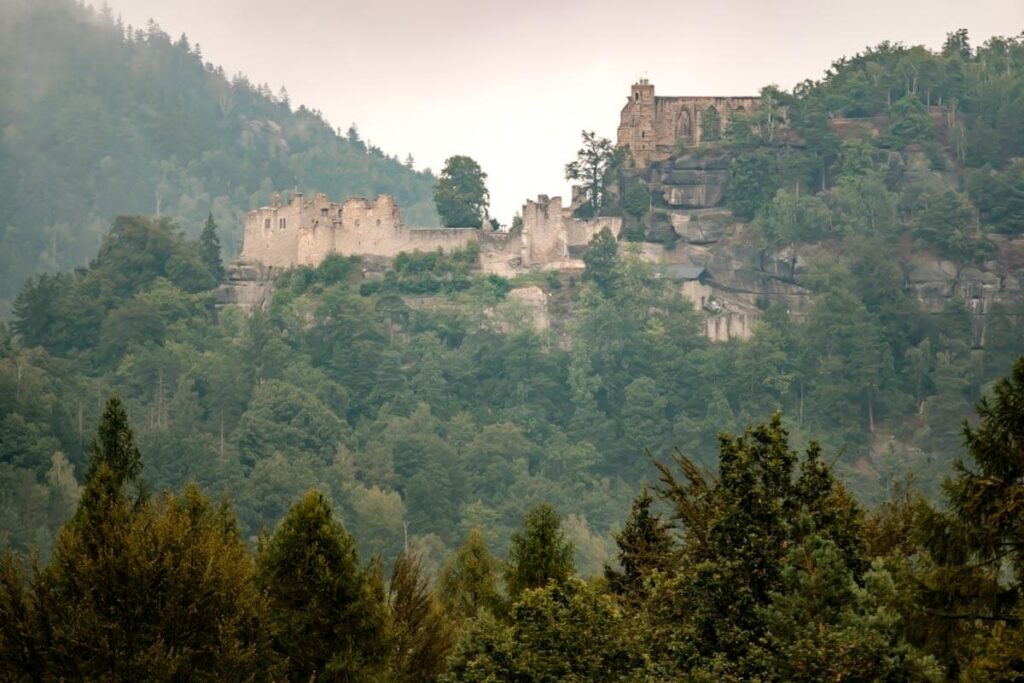
Bergkirche Oybin
A building that immediately stands out as you walk through the main street of Oybin is the Bergkirche Oybin. This historic church is situated in a prominent location, standing higher than other buildings in the village. It was built between 1886 and 1888 at the initiative of Oybin’s residents, who were looking for a Christian gathering place close to their village. The church was designed in a neo-Gothic style by Friedrich August Stüler, a renowned architect from Berlin.
The exterior of the church is simple and quite austere, though the bell tower and vaulted roof immediately catch the eye. The interior of the Bergkirche is beautifully and richly decorated. It features a stunning wooden ceiling with painted wooden panels and the walls are also intricately detailed. It’s definitely worth climbing the steps to the entrance to take a look inside.
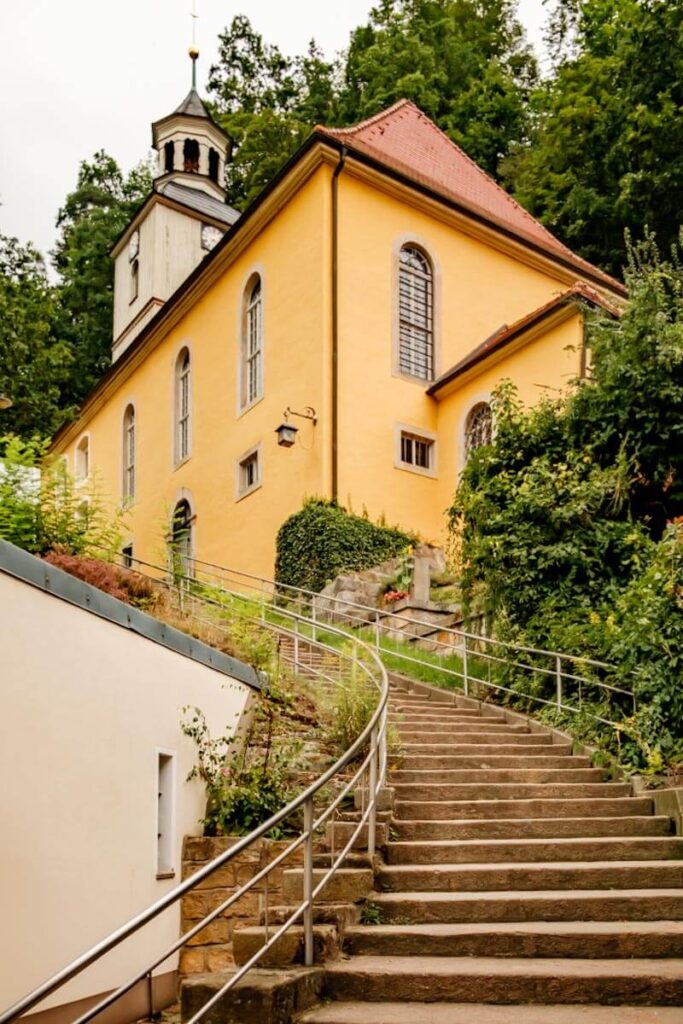
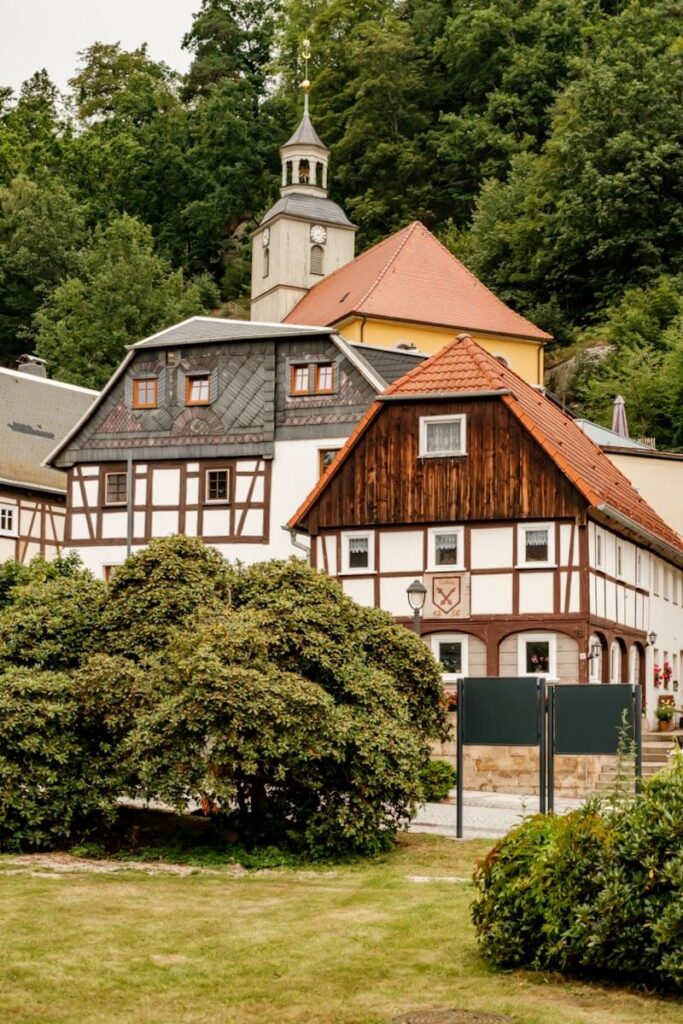
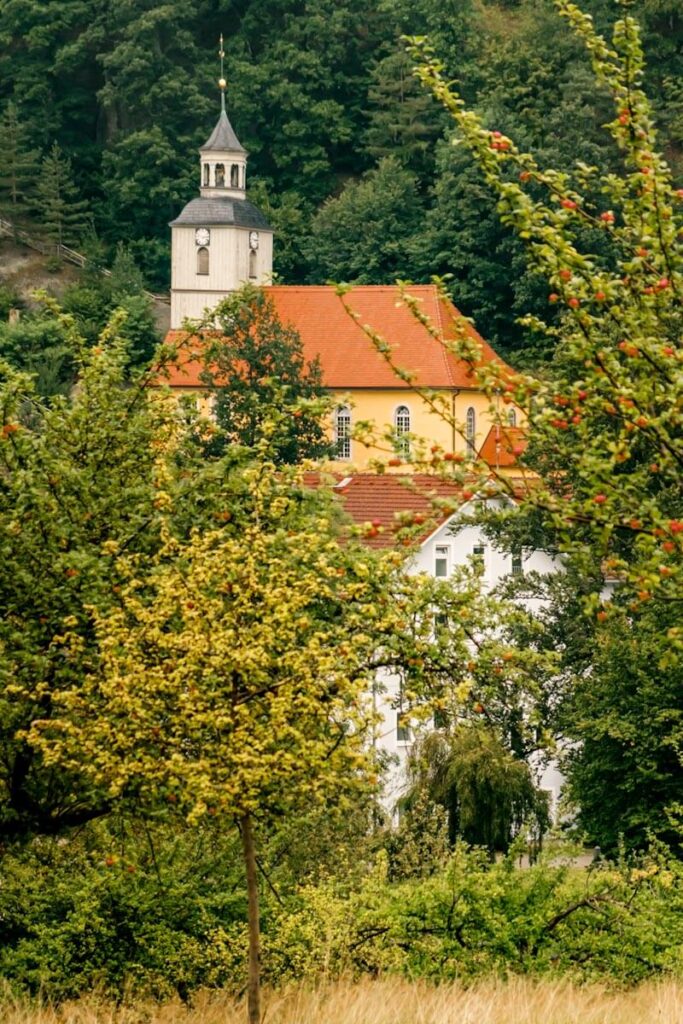
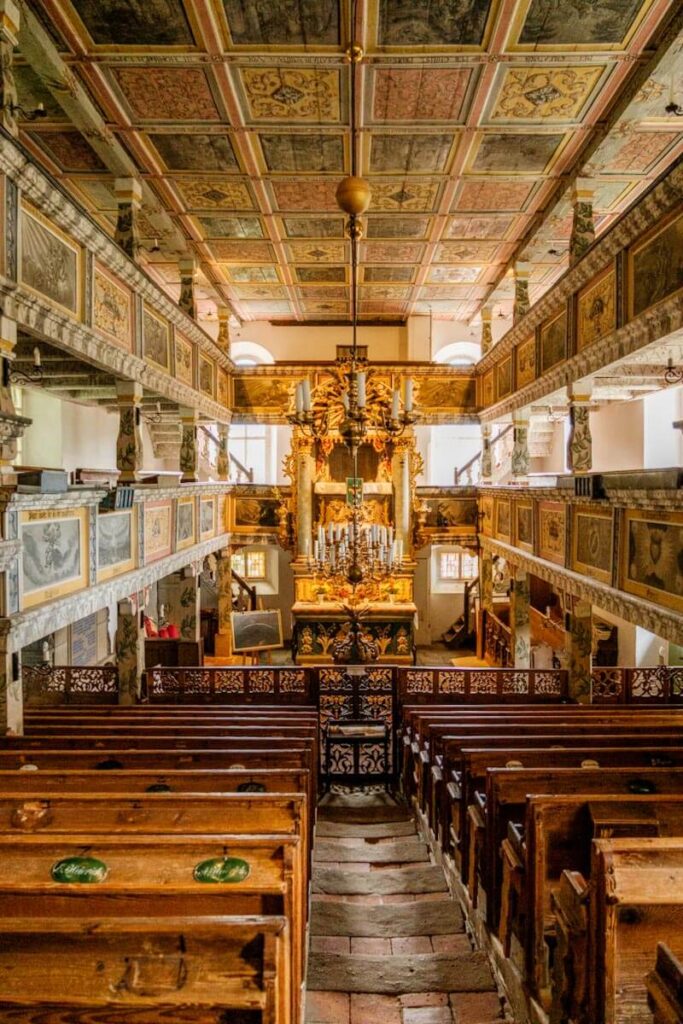
Kelchstein
The Kelchstein is a striking sandstone rock formation in Oybin, named for its distinctive shape. With a narrow base and a wider top, the rock indeed resembles a goblet. The narrow section of the Kelchstein is the most affected by erosion. The rock composition in this part differs from that of the upper and lower sections, causing it to wear away more quickly than the rest.
In addition to the Kelchstein, there are several other remarkable sandstone formations in the Oybin area:
- Sphinx: A rock formation resembling a reclining creature, which gave it its name.
- Steinernes Tor: A natural rock arch reminiscent of a gateway, offering a picturesque view.
- Bastei: Not to be confused with the famous Bastei Bridge in Saxon Switzerland, but a smaller rock formation with beautiful panoramas.
- Schwedenfelsen: A rugged rock formation with historical significance, possibly linked to the Thirty Years’ War.
The forests of Oybin offer fantastic hiking trails, leading you through beautiful spots in the Zittauer Gebirge. Many routes can be found online, for example, on Komoot. Want to explore more and take longer hikes in the Zittauer Gebirge? Book a charming accommodation and take your time discovering the region!
